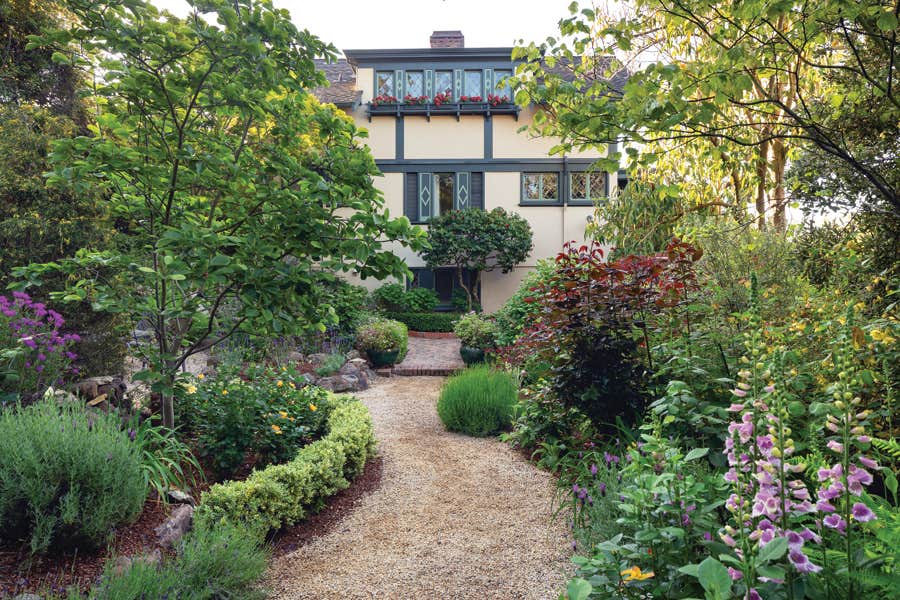Visit a Storybook Style House
Home sweet gnome? This 1923 house in Los Angeles exemplifies the fairy-tale subset of Historical Revival homes of the early 20th century.
Wind your way along the steep hillside flanking Griffith Park in Los Angeles, and you’ll encounter streets with old-world names. It seems fitting that, rounding a curve on Glendower Avenue, you stumble on a house straight out of a fairy tale. In a city known for make-believe and artifice, this Storybook home built in 1923 is a touchstone; its studied imperfections are perfectly imperfect.
The genesis of the house can be traced to a civil engineer named Rufus Buck, who was inspired by some of art director Harry Oliver’s creations. Oliver holds title to the Storybook Style’s first permutations; it was he who designed the Tam O’Shanter, a swayback restaurant built in 1921, as well as the first Storybook Style home, now called Spadena House or the Witch’s House, built as a movie set in Culver City in 1921.
Little is known about original owner Lulu Hlaffer, who may have fallen on hard times during the Depression, as the home went into foreclosure in 1931. In 1933, it was acquired by John and Irene Courcier.
The house would remain in the Courcier family until Donald Brown and Chris Parsons bought it in 1999. Little had changed in three quarters of a century, save for some Bohemian features and furnishings added by the Courciers. Later carpets and linoleum were ripped up, exposing beautiful oak floors.
Unsympathetic light fixtures were removed. Window air conditioners and awnings were jettisoned, and modern heating and air conditioning unobtrusively installed. Upgrades were made to the kitchen and bathrooms.
Soon Brown and Parsons, who are avid antiquers and travelers, could set upon “medievalizing” and rusticating the interior with a blend of wrought-iron and mica light fixtures, old-world antiques, and some bungalow-era Arts & Crafts furniture.
Rooms are relaxed, comfortable, and unpretentious as a result. Unlike the case with more academic styles—Aesthetic Movement, Art Deco, even Arts & Crafts—original Storybook interior decorating was not married to any particular ethos. Given the style’s romanticized European roots, however, medieval and rustic do fit its informality. In other words, doilies are discouraged, but battle axes are perfectly okay.
Arts & Crafts Homes and the Revival covers both the original movement and the ongoing revival, providing insight for restoration, kitchen renovation, updates, and new construction. Find sources for kitchen and bath, carpet, fine furniture and pottery, millwork, roofing, doors and windows, flooring, hardware and lighting. The Annual Resource Guide, with enhanced editorial chapters and beautiful photography, helps Arts & Crafts aficionados find the artisans and products to help them build, renovate, and decorate their bungalow, Craftsman, Prairie, Tudor Revival, or Arts & Crafts Revival home.








